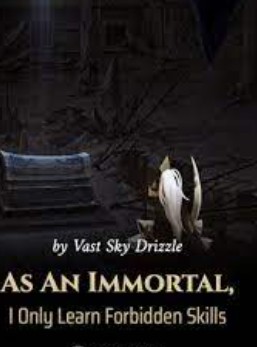Chapter 646 Dangerous
The pressure in the direction of Stalingrad increased sharply.
But even so, under Shulka's defensive tactics, the German offensive was still strong.
But Shulka soon discovered that this was not good for the Soviet army. To be precise, it was not just bad, but the whole of Stalingrad was in danger.
This is not a question of Shulka's tactics or Golikov's command.
In fact, the tactics used by Shulka in Stalingrad were upgraded on the basis of Chuikov...For example, Chuikov did not use pontoon bridges and amphibious landing ships to improve supplies, nor did he launch a campaign of cold guns and cold guns of the entire army to fight consumption with the German army. war.
This will undoubtedly make Stalingrad at this time last longer than the Stalingrad defense war commanded by Chuikov in history, while also harming fewer troops.
The problem is that…
Historically, the Battle of Stalingrad took place in July. If the German army approached the city, it should be August.
Then, when the fighting lasted for several months, the German army encountered the same problem: the winter of the Soviet Union came.
It is understandable that the German army was not prepared for winter during the defense of Moscow, but in the defense of Stalingrad... if the German army is not prepared, it can only be said to be self-inflicted.
However, there are some things that cannot be prepared, such as the problem that the German army equipment is not suitable for the low temperature of the Soviet Union, and the problem of the poor combat effectiveness of the Romanian army.
The former equipment is not suitable for low temperature and will not be fully updated for a while. In this regard, the German army can barely overcome it with low temperature lubricating oil, etc., but the latter is fatal... The river freezes in winter, and it could have relied on the natural danger of the Don River to garrison along the river for protection. The Romanian army on the German flank was completely exposed to the front of the Soviet army.
As a result, the Soviet army launched a fierce attack on the Romanian army on both wings of the German army, and quickly broke through and surrounded the German army attacking Stalingrad in the center... That was the entire 6th Army of the German army, with a total strength of 22 divisions, a total of 330,000 people, and even Paulus He was also captured for this battle.
Originally, Shulka thought that as long as he continued to fight according to this correct tactic, and then applied some tactics that did not exist in this era or that the Soviet army would not even bother to use, then the wheel of history would eventually move in its correct direction. The Soviets won.
However, when the German army suppressed the Soviet army's supplies to enhance its own supplies, and at the same time launched a fierce attack on the front line with the advantage of supplies, Shulka realized that this might not be the case.
"If the current speed is used, how long will it take for the Germans to capture Stalingrad?" Shulka asked.
"I'm not sure!" Akimovich looked at the map, then picked up a pen and replied while drawing: "If we calculate purely based on speed and our strategic depth, then we should be able to resist for two months. The problem is that fighting is not a simple calculation!"
While talking, Akimovich drew a line on the map with a pen and said: "If the enemy captures half the depth of our army, that is, advances two kilometers, then our army will be compressed into a space only three kilometers wide. A long strip. This is very unfavorable to us, because as long as there is a flaw at any point, it is likely to be captured by the Germans and attack all the way to the Volga River, so our defense area will be cut into two pieces, And this situation will continue to happen, and it won't be long before we will be divided into several pieces to fight on our own! More importantly, once we reach this distance, our artillery will be restrained everywhere because there is not enough room to move. , German artillery will directly block the Volga supply line!"
Needless to say what consequences this will cause, all pontoon bridges, amphibious landing ships, and transportation channels will all be wiped out under the blockade of German artillery fire.
At that time the Luftwaffe could even withdraw from the bombing ranks.
"How much time does it take to develop like this?" Shure asked.
"More than a month!" Akimovich replied: "It will not exceed one and a half months at most!"
Shulka was silent. It was only mid-June at this time, and it was only August in a month and a half, and it was still far from winter.
That's the problem, and that's what Shulka ignored...Because the German attack was advanced, and months earlier, so even if Shulka did everything right, in the end it couldn't save Stalingrad.
Because the Germans had much more time to attack, even if they were stuck in the quagmire of Stalingrad, even if the speed of advance was calculated in meters, they still had enough time to gnaw down Stalingrad.
But the difficulties of the Soviet army are far more than these.
Just when Shulka and Golikov were frowning and didn't know how to solve this problem, Akimovich took a look at a telegram and handed it up nervously: "Comrade Golikov, Spotted a company of 'new tanks' of the enemy, they attacked from the middle of the residential area!"
The so-called "new tank" is the "Tiger". Because Golikov didn't know much about it, he didn't have much reaction, but Shulka looked up in horror.
Concentrating "Tiger" tanks to attack residential areas... This may seem counterintuitive, but it has its own reasons.
It is unreasonable because things like tanks are taboo to fight street battles with the enemy, because street battles will limit the advantages of tanks' mobility and long range, while enemy anti-tank equipment and even infantry can easily approach the target and blow them up.
He also said "it has its own reason", and it should be said that "soldiers have no constant momentum, and water has no constant shape".
The "Tiger" tank or the "Tiger" tank at this time has no mobility at all, so there is no such thing as limited mobility when using it for street fighting.
Long-range attacks are indeed restricted, but the Germans don't care.
Because of the armor thickness of the German "Tiger" at this time, almost all anti-tank guns are ineffective against it, so the "Tiger" does not need to worry about the enemy's close-range attack.
Its flanks and rear may still worry about bazookas, but the Germans will definitely use infantry cover to fight steadily.
So the German army could use the "Tiger" armor and firepower to advance step by step in the residential area. Once it crossed the Volga River, it achieved the goal of dividing the Soviet army in two.
"Set up roadblocks!" Golikov immediately ordered after hearing Akimovich's introduction: "There are also barbed wire and anti-tank mines. If necessary, blow up buildings to block roads, and use all means to stop them from advancing!"
"Yes, Comrade Golikov!"
These are indeed a solution, but they are not a long-term solution.
Because the German army will send out the "Tiger Type" at this time, I have long thought that the Soviet army will use these methods to stop them.
That is to say, the German army is also preparing for a protracted war. They will use the "Tiger" tank as a turret and roll forward bit by bit.
The Soviet army could only watch it slowly penetrate but could do nothing.
(end of this chapter)
RECENTLY UPDATES
3.45







